Types of HEMA Sword Fighting and Its Traditions
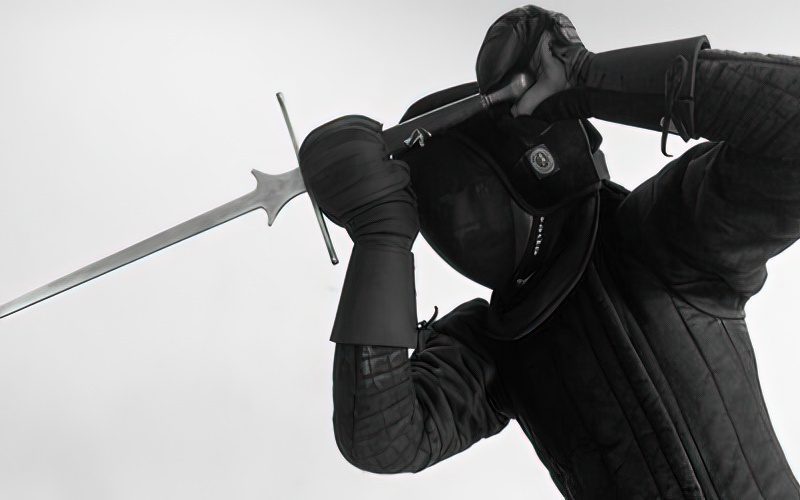
What’s in this article?
Historical European Martial Arts (HEMA) reconstructs the fighting techniques of Europe, including medieval and Renaissance swordsmanship. Many people come to HEMA for sword fighting and to learn how to use a specific type of sword. Today, there are various sword fighting styles and traditions studied by martial artists.
Let’s explore the types of HEMA sword fighting, their different styles and traditions, and how it compares to popular types of fencing.
Types of HEMA Sword Fighting
The sword fighting techniques used in HEMA are based on historical fighting manuals and treatises. Called fechtbuch in German, these fight books were practical combat guides for professional soldiers. They were technical works about how to fight against opponents wielding all kinds of weapons.
1. Sword and Buckler Fighting
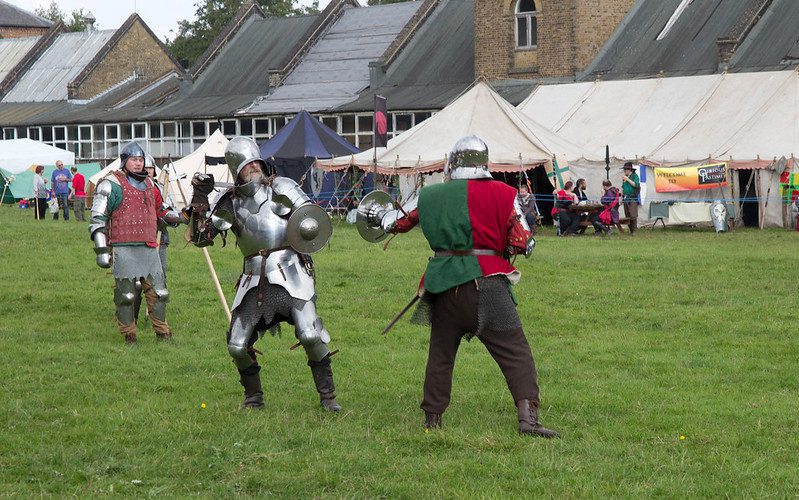
Early medieval swords were used with a small shield called a buckler. Buckled to the arm and shoulder, the buckler served as a handheld shield for parrying an incoming blade or offensively used against the opponent and his weapon.
The arming sword, sometimes called the knightly sword, was primarily used with the buckler. It was a single-handed sword with a simple crossguard and double-edged blade. The sword and buckler were efficient against chainmail armor of the time.
Bolognese Tradition vs. German Tradition
Today, HEMA fencers who study sword-and-buckler fighting follow Bolognese or German treatises.
| Tradition | Bolognese or Italian | German |
|---|---|---|
| Foundation | Based on works of fencing masters Antonio Manciolino and Achille Marozzo | Based on the Tower Fechtbuch manuscript and works of fencing masters Andre Liegniczer, Paulus Kal, and Hans Talhoffer. |
| Differences | Devoted to fighting at long range | Devoted to fighting at close-range |
| Advantages | The Bolognese fencer tends to win at long-range sword fighting, where his opponent is least skilled. | The German fencer survives at close-range sword fighting, where his opponent is least skilled. |
2. Longsword Fighting
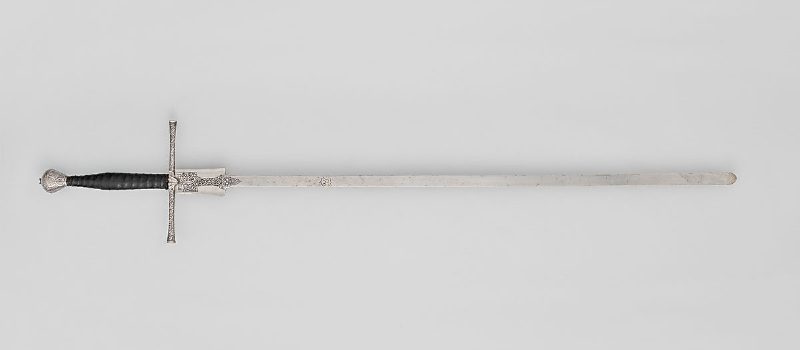
In HEMA, a longsword refers to a sword with a grip for two-handed use, yet lightweight enough to wield in one hand. Also, it is small enough to be drawn from the belt. It is the most popular sword type studied in most HEMA clubs.
In the Middle Ages, the longsword was widely used in wars, tournaments, and dueling. Today, the federschwert or feder serves as the training weapon for practicing longsword techniques. It has thick edges and blunt tips to minimize sparring injuries.
In HEMA, longsword traditions generally fall into Italian or German. The Italian longsword tradition is based on an older source material than the German, though the latter is the most commonly studied.
Italian Tradition
The Italian longsword may refer to the Bolognese tradition, or the Armizare—the martial art of Fiore dei Liberi. Generally, it is closer to the fighting methods the medieval knights would use.
The Italian longsword tradition is focused on The Flower of Battle manuscripts by Fiore dei Liberi and the works of Philippo di Vadi. It covers the use of longswords in one or two hands, grappling techniques, armored fighting, and mounted combat.
German Tradition
The German longsword often refers to the Kunst des Fechtens (KDF), the fencing system of Johannes Liechtenauer. It is also referred to as Liechtenauer’s tradition. However, there are also other German traditions.
The German longsword tradition is associated with the fighting techniques of the Brotherhood of Saint Mark (Marxbrüder), a 15th-century guild in the Holy Roman Empire. Generally, it covers armored and unarmored longsword fighting.
However, there are no direct works by Liechtenauer. Many fencing masters, like Hans Talhoffer and Sigmund ain Ringeck, produced useful source material in this tradition. Many modern HEMA practitioners also study the manual Thorough Description of the Art of Fencing by Joachim Meyer.
English Tradition
Less commonly studied than the Italian or German traditions, the English longsword tradition is based on the martial arts texts of medieval England. It was probably used by English noblemen and fencing enthusiasts.
HEMA longsword practitioners study the manual Paradoxes of Defence by George Silver, a 16th-century English fencing master. However, the English longsword tradition is the most difficult to reconstruct due to few manuscripts. It also does not cover fighting in armor or while mounted.
3. Greatsword Fighting
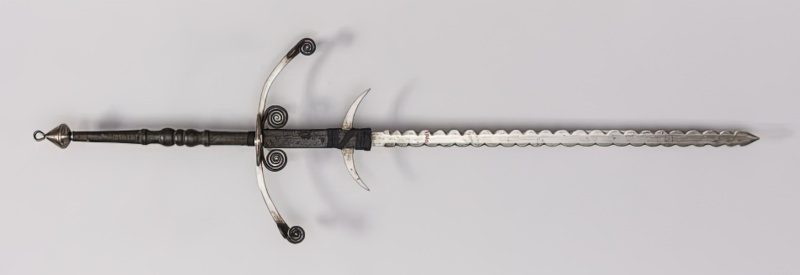
A greatsword refers to a large sword designed to be used with two hands and often served as a breaching weapon in military warfare. However, some types also served as a weapon against multiple opponents.
Typically, greatsword techniques involve large sweeping motions and changes in directions. However, the weapon is quite unsafe to use with a partner, so some HEMA practitioners practice it through solo training exercises.
In HEMA, a greatsword may refer to various types depending on the tradition. Historically, the most popular is the zweihander of the German Landsknechts, but there are also the Italian spadone and the Spanish/Iberian montante.
4. Rapier Sword Fighting
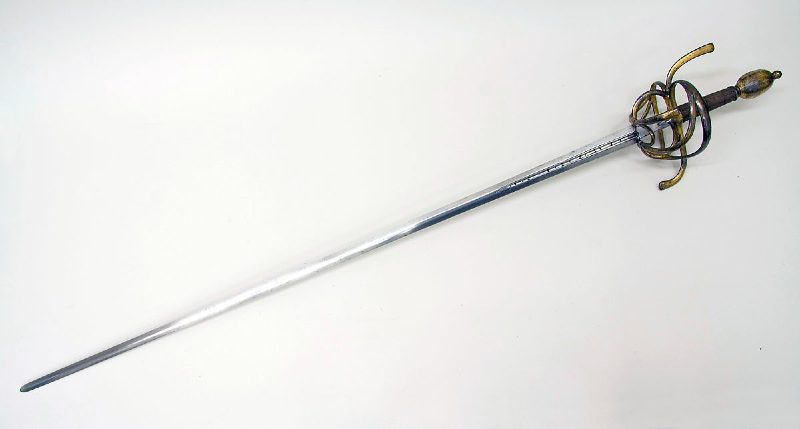
Rapier was the dueling weapon throughout the 16th to 17th centuries and was also associated with court and fashion. As thrusting swords, they feature a narrow blade and a sharp tip, but without a true cutting edge.
Historical rapiers were rigid, but rapier training swords used in HEMA are designed to bend on the thrust. Also, contrary to its popular depiction in movies, the rapier is not used by swinging it around in a swashbuckling manner.
HEMA practitioners study different rapier fighting styles. The Italian rapier tradition is the most popular among HEMA practitioners. Rapier hilt guards are also associated with certain traditions, though not necessarily exclusive to them.
Italian Tradition
The Italian rapier tradition is focused on the works of Camillo Agrippa, Nicoletto Giganti, Francesco Fernando Alfieri, and others. Agrippa and Giganti’s treatises feature the use of a rapier with a dagger, buckler, shield, cloak, or another rapier.
On the other hand, Alfieri emphasizes displacing the enemy’s blade. Some techniques are also focused on linear movements. An Italian rapier tended towards swept-hilt guards, with bars sweeping up in a graceful curve. Despite its lack of protection, it was popular due to its elegant appearance.
Spanish Tradition (Destreza Tradition)
The Spanish rapier tradition is based on the works of Jerónimo Sánchez de Carranza and Luis Pacheco de Narváez. Generally, Carranza’s rapier system uses geometry and physics, emphasizing circular movements.
In Spain and other parts of Italy under Spanish influence, a fully enclosed cup-hilt guard became popular on rapiers, likely due to the defensive-oriented nature of the Destreza tradition. Fencers even utilized the Romepuntus flap on the cup to trap their opponent’s blade.
German Tradition
The German rapier tradition focuses on the works of Joachim Meyer and Michael Hundt. Hundt’s treatise features cut and thrust attacks, the use of a rapier with a parrying dagger. It also covers using rapier against multiple opponents and various weapons. Many German rapiers had a Pappenheim hilt with two shell guards.
English Tradition
The English mostly studied rapier fencing under Italian masters, though there were also treatises written by English authors, such as Joseph Swetnam. The English tradition features the use of the rapier alone; and a rapier with a dagger.
5. Smallsword Fencing

The smallsword evolved out of the heavier rapier and became widespread toward the end of the 17th century. It is a lightweight, single-handed thrusting sword with a triangular blade. It also served as a dueling weapon and a court sword, reflecting the social status of their owners.
However, smallsword fencing is less popular among HEMA practitioners. In New York, the Martinez Academy of Arms teaches smallsword fencing. While the French smallsword tradition emphasizes blade-to-blade contact, the Spanish incorporates the cutting techniques of a rapier.
6. Military Swords and Sabers

By the 16th century onwards, the European cavalry and infantry forces used various types of military swords. A saber is a single-edged sword with a curved blade, designed for slashing.
However, HEMA saber fencing varies greatly, depending on the saber type and tradition. Some HEMA practitioners also train in basket-hilted swords such as Scottish broadswords and Venetian schiavona.
Historical Swordsmanship vs. Sport Fencing
The term “historical swordsmanship” refers to sword skills and techniques used by warriors in the past. On the other hand, “sport fencing” is a modern competitive sport that utilizes fencing swords.
| Type | Historical Swordsmanship | Sport Fencing |
| Coverage | Includes ancient swordplay (e.g. Celtic, Greek, Roman), and medieval and Renaissance swordsmanship. | A modern athletic sport that uses different fencing weapons, but is not historically accurate. |
| Goal | Realistic reconstruction of historical combat without choreographed elements. | Uses fencing swords according to rules of competition. |
| Techniques | Utilizes actual sword techniques used in fighting real life-or-death battles. | Uses fencing swords for hitting different target areas, and does not replicate real sword fights. |
HEMA Sword Fighting vs. Olympic Fencing
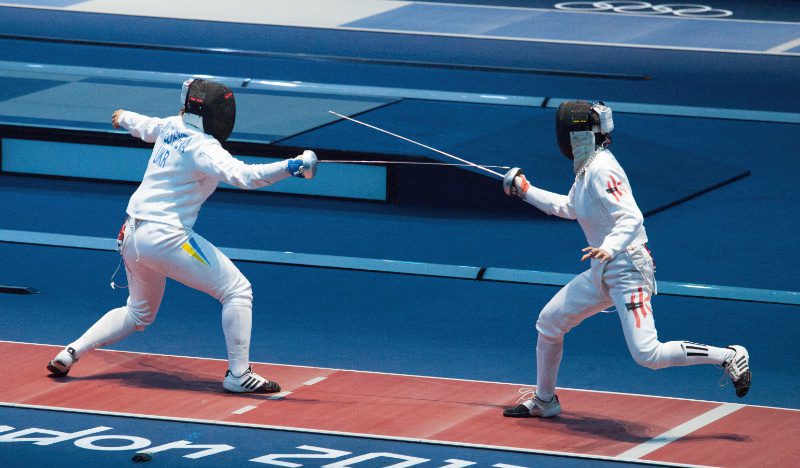
The difference between HEMA sword fighting and Olympic fencing lies in principles, set of rules, and types of weapon simulators used.
| Type | HEMA Sword Fighting | Olympic Fencing |
| Foundation | The sword fighting techniques used are based on medieval fight books and manuals. HEMA practitioners also use swords in the way they were originally designed to be used. | Emerged from the smallsword and military saber traditions—but bears little resemblance to them. |
| Goal | HEMA practitioners focus on sword techniques the medieval swordsmen used in fighting life-or-death battles. | Fencers focus on scoring points by hitting target areas on the opponent’s body. |
| Weapons | Uses practice swords (e.g. federschwert or feder and rapier training sword) intended to simulate historical weapons. | Uses weapon simulators (i.e. foil, épée, sabre) that are less historically accurate. |
| Fighting Area | HEMA fighters have a more realistic fighting space, allowing them to circle one another during a match. | Fencers fight on a rectangular fencing mat called a piste. |
HEMA Sword Fighting vs. SCA Sword Fighting
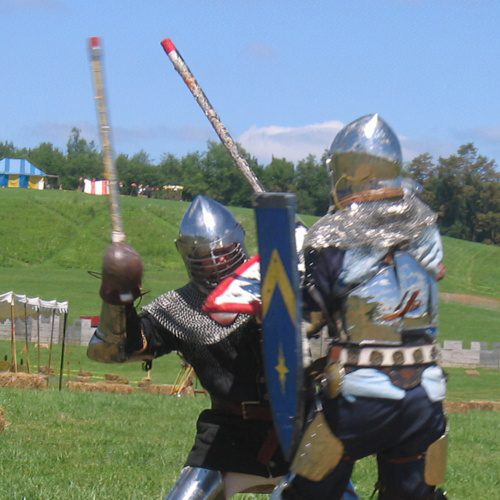
The Society for Creative Anachronism (SCA) replicates medieval European culture and has its own combat sport. However, its armored combats are typically just for fun.
| Type | HEMA Sword Fighting | SCA Sword Fighting |
| Martial Art or Sport | Martial arts-based sword fighting using historical techniques. | A combat sport, though some SCA combatants incorporate historical techniques in fighting. |
| Combat Type | Focuses on single combat | Features different combat situations (e.g. one-on-one duels and melees) |
| Weapons | Uses realistic weapon simulators (e.g. federschwert, and other training swords for rapiers and sabers). | Uses improvised weapons, often made from rattan and foam rubber. |
| Protective Gear | HEMA practitioners do not wear metal armor, only protective gear. | SCA combatants wear chainmail, plate armor, or improvised armored suits. |
HEMA Sword Fighting vs. Japanese Kendo
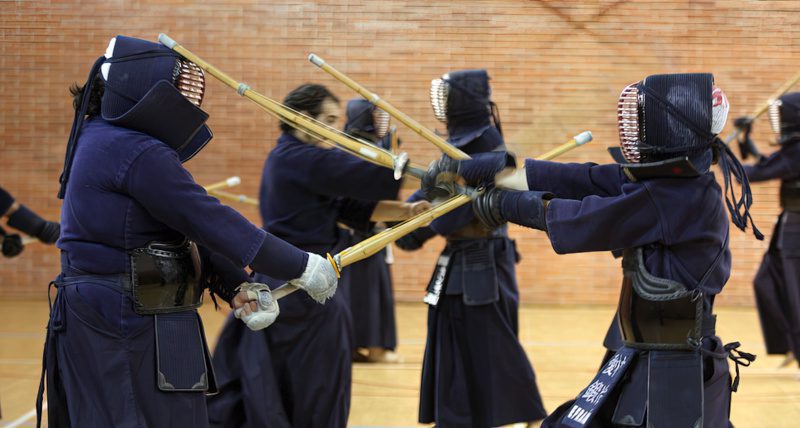
Kendo is Japanese-style fencing, derived from the fighting methods of the samurai warriors of feudal Japan. Both HEMA sword fighting and Japanese kendo involve full-contact sparring and require the wearing of protective equipment for safety reasons.
| Type | HEMA Sword Fighting | Japanese Kendo |
| Goal | HEMA practitioners fight with swords based on how they were used as weapons of warfare. | Kendo practitioners aim to strike their opponents on target areas to earn points in a match. |
| Weapons | Uses steel training swords that replicate the qualities of a real sword. | Kendo practitioners use a bamboo sword shinai for sparring practice and wooden swords (bokken) for kata training. |
| Blade Quality | HEMA training swords have blunt blades designed to bend when thrusting. | All blows use the cutting edge portion of the bamboo shinai, though it is not sharp. |
| Differences | Focuses on fighting effectively using swords. | Includes etiquette and ritual formalities (i.e. bowing) even though they have no practical purpose in combat. |
| Protective Gear | HEMA fighters wear protective gear (e.g. fencing jackets, fencing masks, neck protectors, and sparring gloves). | Kendo practitioners wear protective equipment (e.g. traditional jacket, mask, hakama, chest guard, lower body protector, padded gloves.) |
| Rules | Incorporates grappling, kicking, disarming, and throwing in some matches. | Focuses on swordplay and does not allow kicks and throws. |
HEMA Sword Fighting Styles
In HEMA, the most common styles of sword fighting are Kunst des Fechtens (KDF) and Armizare. The former is most associated with the German longsword, while the latter is with the Italian longsword. Generally, different HEMA clubs focus on different styles and traditions.
Beginners who want to learn sword fighting must first consider the different styles, including the types of swords and fighting methods used in each.
Kunst des Fechtens (KDF)
The Kunst des Fechtens is the fencing system of Johannes Liechtenauer, a German fencing master of the Holy Roman Empire. Its fencing masters include Sigmund Ringeck, Andre Lignitzer, Peter von Danzig, Hans Talhoffer, and others.
In KDF, HEMA practitioners study the sword and buckler, the German longsword, langes messer, and dagger. The system also covers the use of the spear, poleaxe, and longshield.
Armizare
The Armizare is the martial art of Fiore dei Liberi, a 14th-century Italian knight. It focuses on the Italian longsword and teaches other weapons, such as daggers, spears, and polearms. Fiore’s manuscripts also feature fighting in armor and on horseback.
Bolognese
The Bolognese tradition is centered in Bologna, Italy. Its fencing masters include Filippo Dardi, Achille Marozzo, Antonio Manciolino, and Guido Antonio di Luca. It teaches the use of the sword and buckler, dagger, and polearms. It also features the use of companion weapons, such as sword and shield; sword and cloak; two swords; and sword and dagger.
Escrima Comun
The Escrima Comun is a fencing system from Portugal and Spain. Its fencing masters include Domingo Luis Godinho, Pedro de la Torre, Francisco Román, and Jaime Pons. It focuses on the use of the sword and buckler along with greatswords. It also includes other companion weapons like the sword and shield; sword and cloak; two swords; and sword and dagger.
Pietro Monte
Pietro Monte was a 15th-century Spanish master of arms and his system includes the use of single-handed swords, longswords, daggers, poleaxes, and lances. It also teaches armored and mounted combat.
A Brief History of European Sword Fighting
In the Middle Ages, only the wealthier soldiers used swords while others armed themselves with whatever was available. The glaive was a popular weapon due to its low cost, but some also used knives, daggers, and agricultural tools.
Sword and Buckler Combat
The earliest known fechtbuch (fight book) is dedicated to sword-and-buckler fighting, making it the oldest surviving martial tradition in Western Martial Arts (WMA) today.
- Bucklers widely varied in construction and appearance.

Bucklers were typically round, though square, trapezoidal, and octagonal versions were also used. Most were made of metal, but some were constructed from layers of wood or hardened leather. German fencing master Hans Talhoffer even showed techniques using an ornate buckler, with two hook-like protrusions for catching and deflecting the opponent’s blade.
- The sword-and-buckler weapon combination was both defensive and offensive.
Some bucklers had spikes that could strike blows of their own. Their small size also made them adaptable in combat as larger shields could be easily hooked by axes and polearms. Meanwhile, handheld bucklers could easily avoid such attempts. Therefore, they were a common military tool among knights and soldiers.
- The sword-and-buckler fighting survived longer than large shields.
Any type of round shield or small targe would be called a buckler, though a targe was usually flat rather than convex and worn on the arm like most types of shields. The targe was mostly associated with the Scots, though it was widely used throughout Europe. In the 16th century, some rapier fencers retained their use of round bucklers in fencing.
Longsword in Medieval Combat
The longsword was widely used in wars, judicial duels, tournaments, and street brawls. Medieval fight books regard the longsword as the most important weapon due to its versatility. Some teach techniques suited for particular circumstances: fighting on foot in armor, unarmored, and mounted.
Fighting in armor was a vital skill for medieval knights. On the other hand, crossbowmen and archers who could not afford the expensive full armor trained in unarmored combat. Mounted combat was also a significant skill for knights, though it became less practical after the infantry revolution by the mid-14th century.
Historical Fencing in Modern Times
Today, various forms of historical fencing can be practiced as martial arts, martial sports, and performance arts. HEMA is a martial art based on historical fighting methods but is not part of historical reenactment and live-action role-playing (LARP). Generally, martial sports vary in historical accuracy while theatrical fencing was developed for entertainment.
Conclusion
Medieval swordsmanship is the most common highlight of Historical European Martial Arts (HEMA), though some martial artists also study other weapon systems like polearms, daggers, and so on. Also, different HEMA clubs around the world follow different styles and traditions in sword fighting.




